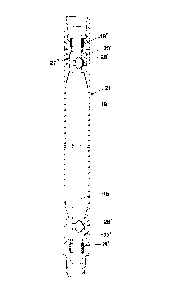Some of the information on this Web page has been provided by external sources. The Government of Canada is not responsible for the accuracy, reliability or currency of the information supplied by external sources. Users wishing to rely upon this information should consult directly with the source of the information. Content provided by external sources is not subject to official languages, privacy and accessibility requirements.
Any discrepancies in the text and image of the Claims and Abstract are due to differing posting times. Text of the Claims and Abstract are posted:
| (12) Patent: | (11) CA 1316168 |
|---|---|
| (21) Application Number: | 1316168 |
| (54) English Title: | DRILL STRING ELEMENT |
| (54) French Title: | ELEMENT DE TRAIN DE SONDE |
| Status: | Expired and beyond the Period of Reversal |
| (51) International Patent Classification (IPC): |
|
|---|---|
| (72) Inventors : |
|
| (73) Owners : |
|
| (71) Applicants : |
|
| (74) Agent: | GOWLING WLG (CANADA) LLP |
| (74) Associate agent: | |
| (45) Issued: | 1993-04-13 |
| (22) Filed Date: | 1989-04-25 |
| Availability of licence: | N/A |
| Dedicated to the Public: | N/A |
| (25) Language of filing: | English |
| Patent Cooperation Treaty (PCT): | No |
|---|
| (30) Application Priority Data: | ||||||
|---|---|---|---|---|---|---|
|
Abstract
The present invention relates to a drill string element
adapted to be coupled to other similar drill string elements
by thread connections (19) thus forming a drill string for top
hammer drilling. Each drill string element includes at least
one rod (15;15';15") for transferring impact energy to a drill
bit (11) provided at the lower end of the drill string (10)
and a tube assembly (21;21';21") for transferring rotation to
the drill bit (11), said tube assembly surrounding the rod.
When handling drill string elements of the above-mentioned
type it is extremely important that this handling can take
place in a safe way without any risk for accidents during
operation working site. Previously known drill string
elements of the type in question have the disadvantage that
the rod can fall out of the tube assembly in one direction.
Also the accessibility to the interior of the drill string
element in connection with repairs/service must be considered
and the drill string elements must stay intact during
operation, especially when they are unscrewed from each other.
The invention is characterized by that the tube assembly
(21;21';21") in the area of the two ends of the rod
(15;15';15") is provided with an internal diameter reducing
(27;27',27";27'''), and that the rod (15;15';15") is provided
with cooperating radial projections (28;28') or shoulder means
(28"). Also the tube assembly (21;21';21") includes at least
two tubular members (18;18';18") that are coupled to each
other by a thread connection that is harder to unscrew than
the thread connection (19) for coupling together the drill
string elements.
Note: Claims are shown in the official language in which they were submitted.
Note: Descriptions are shown in the official language in which they were submitted.

2024-08-01:As part of the Next Generation Patents (NGP) transition, the Canadian Patents Database (CPD) now contains a more detailed Event History, which replicates the Event Log of our new back-office solution.
Please note that "Inactive:" events refers to events no longer in use in our new back-office solution.
For a clearer understanding of the status of the application/patent presented on this page, the site Disclaimer , as well as the definitions for Patent , Event History , Maintenance Fee and Payment History should be consulted.
| Description | Date |
|---|---|
| Inactive: Adhoc Request Documented | 1996-04-13 |
| Time Limit for Reversal Expired | 1995-10-15 |
| Letter Sent | 1995-04-13 |
| Grant by Issuance | 1993-04-13 |
There is no abandonment history.
Note: Records showing the ownership history in alphabetical order.
| Current Owners on Record |
|---|
| SANDVIK AB |
| Past Owners on Record |
|---|
| KENNETH L. LARSSON |
| SVEN P. LILJEBRAND |